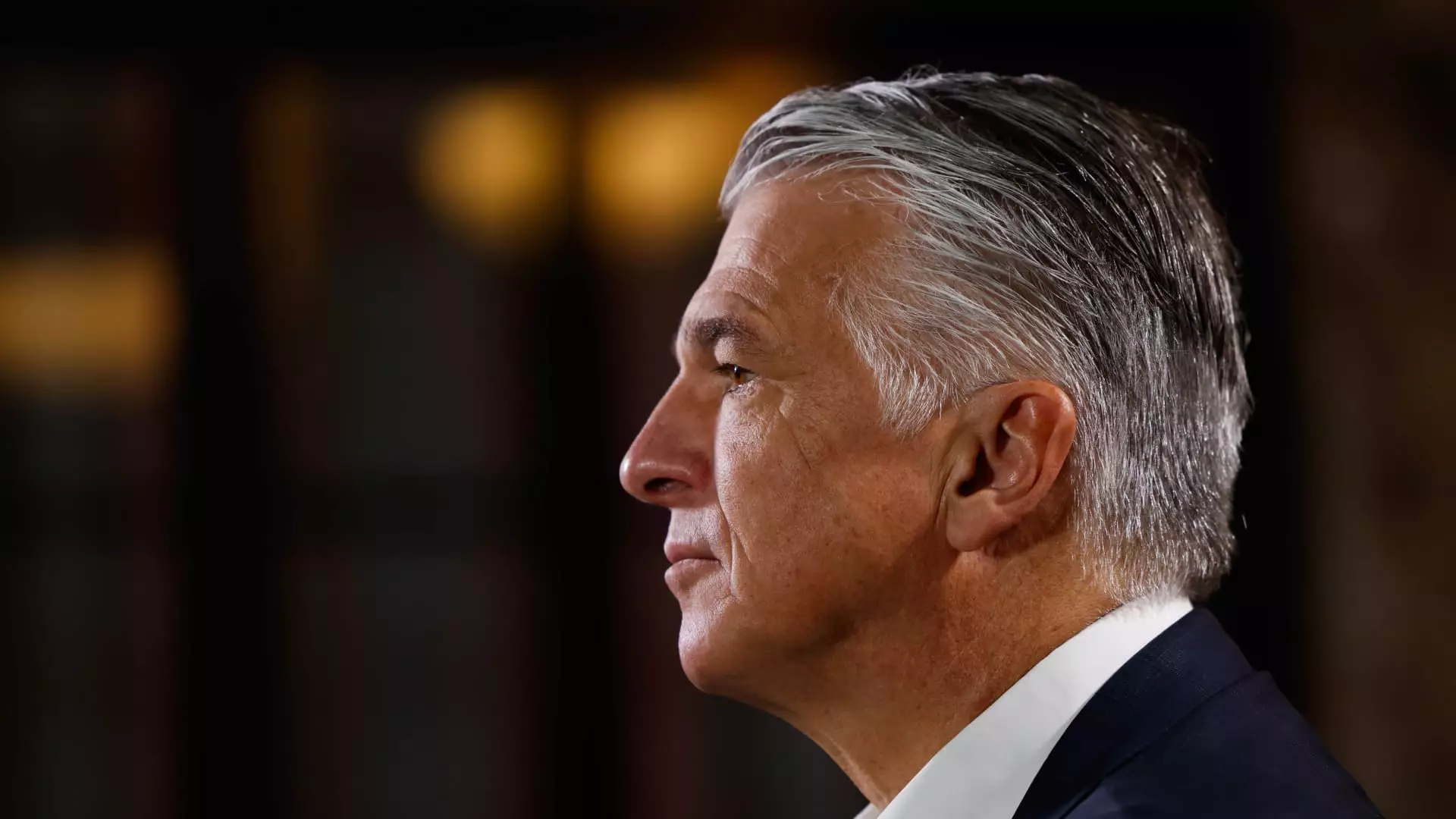In recent remarks, Sergio Ermotti, the CEO of UBS Group AG, has offered a nuanced analysis of the ongoing struggle with inflation, particularly in the context of the expectations surrounding the U.S. Federal Reserve. His insights provide a critical lens on investor behavior and highlight the complexities of monetary policy in a climate marked by uncertainty.
Understanding Market Sentiment
Ermotti firmly stated that the market seems overly optimistic about the Federal Reserve’s potential for aggressive interest rate cuts in September. His commentary sheds light on a common cognitive bias in financial markets: the tendency for investors to anticipate favorable outcomes without adequately considering the underlying economic indicators. When Ermotti mentions that some investors may be getting “too ahead of themselves,” he is implicitly warning about the dangers of speculation driven by sentiments rather than by data.
The anticipation surrounding the Fed’s upcoming policy meeting has been palpable, with traders factoring in a significant likelihood of a rate reduction. A staggering 85% probability has been assigned to a 25 basis points cut, while 15% of traders are pushing for a more substantial 50 basis point reduction. Yet, Ermotti’s statement suggests that such assumptions may not be grounded in the reality of current inflationary trends, which remain unresolved.
Central to Ermotti’s argument is the persistent nature of inflation, emphasizing that the core consumer price index (CPI) continues to display “stickiness.” The statistics shared, indicating a 0.3% increase in core CPI for August, serve as critical indicators that the Fed’s battle against inflation is far from over. This part of the narrative raises an important point about the complexities in controlling inflation. While headline indicators may suggest mild improvements, such as the overall CPI rising only 0.2%, deeper analysis reveals that foundational issues linger.
The implications of these inflation statistics are profound. If the Fed considers a rate cut without comprehensive control over inflation, it risks exacerbating the very economic conditions it aims to alleviate. Ermotti’s view aligns with a cautious, data-driven approach that advocates for careful navigation rather than rushed decisions based on market sentiment.
Ermotti posited that a “soft landing”—a scenario where economic growth slows down without leading to recession—remains a possibility. He introduced an optimistic note, arguing that consumers have shown resilience and that economic indicators also suggest that stability might still be achievable. However, this perspective does not negate the challenges linked to inflation.
The term ‘soft landing’ may suggest an easy transition, but in reality, it could require deft handling of monetary policy and fiscal strategies. The reality is that any miscalculation could lead to unintended economic turbulence, an eventuality that both investors and policymakers must guard against.
The Broader Economic Landscape
Ermotti also touched upon the dynamics of the Asian market and China’s prospects, framing them as critical growth areas for UBS. Despite the challenges highlighted in the prevailing economic climate, he reaffirmed UBS’s long-standing commitment to China—a market it has served for over half a century. With China’s economic outlook being under scrutiny, Ermotti’s confidence suggests an understanding of the intrinsic value and opportunities that persist despite visible challenges.
The juxtaposition of optimistic growth against geopolitical uncertainties reflects the intricate balance that businesses must strike in today’s global economic environment. By committing to a long-term vision in rapidly evolving markets like China, UBS is positioning itself strategically for both current and future economic contexts.
The dialogue surrounding inflation, interest rates, and economic growth is one of complexity and caution. Sergio Ermotti’s analysis presents a compelling case for a measured approach to monetary policy, urging investors and analysts alike to remain grounded in data and realistic scenarios rather than succumbing to speculative optimism. As markets continue to grapple with inflation and the Fed’s potential responses, the insights shared by Ermotti may serve as a critical guide for understanding the path forward in an uncertain economic landscape.


Leave a Reply